Photo
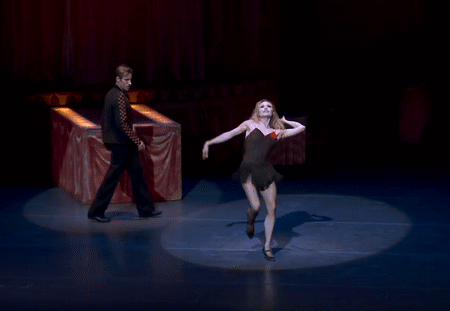

Sara Mearns and Andrew Veyette in Slaughter on Tenth Avenue (New York City Ballet)
162 notes
·
View notes
Photo

VISIT –> amazon.com/author/all-about-psychology
23 notes
·
View notes
Text
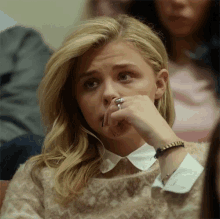
How was it, Christine wondered, that World History had somehow ended up as a GenEd requirement? She hadn’t taken a history class since her sophomore year of high school. They were always absurdly dull, and since History was, well, everything, on the rare occasions there’d be an interesting topic, it would be dropped in less than a week. The interesting topics, though, were few and far between, because everyone knew History was really just History of Wars and Laws, not History of Music, or History of Medicine or anything to do with the actual ways normal, non-soldiers lived.
Still, she took her seat up at the front, smile plastered over her cheeks, and took out her yellow-is-for-history notebook and gel pens. Sure, she was probably the last college student on the planet not to take notes on her computer, but the color coding just added something a little nicer to what was otherwise an extremely boring exercise in extremely boring things.
She leaned back, glancing around the room. Who did she know here...? Not a ton of people, apparently. That was good. She didn’t need her reputation to precede her in History class. Next thing she knew, she’d be doing all the work in projects, or else nobody would want to partner with her. It was really for the better that she didn’t know-
Oh!
She beamed, waving at the person who’d just walked through the door. “Hey, it’s so good to see you! Let’s sit together, I’d love to catch up, it’s been way too long!”
1 note
·
View note
Photo

VISIT –> www.all-about-psychology.com for quality psychology information and resources.
19 notes
·
View notes
Photo

Visit –> https://www.all-about-psychology.com/on-the-pathogenesis-of-some-impulsions.html to read ‘On The Pathogenesis of Some Impulsions’ by Pierre Janet in full for free. This fascinating article was originally published in the Journal of Abnormal Psychology in 1906.
14 notes
·
View notes
Photo

Ida Praetorius and Alban Lendorf in The Kermesse In Bruges (Royal Danish Ballet)
107 notes
·
View notes
Photo


Claire Calvert in The Sleeping Beauty (Royal Ballet)
149 notes
·
View notes
Text

Christine let her gaze linger on the redhead for a moment, before grabbing the tequila, pouring it into a tall, thin glass, and adding some orange juice, spinning the mixture in a motion that declared she’d done this a thousand times. Finally, she pulled a small bottle of grenadine out of her pocket, pouring it in carefully, and passing the glass to Mari deftly. “Let that settle,” she advised. “It tastes better if the grenadine bleeds in on its own, and the sugar will completely mask the taste of the cheap tequila. A sunrise is my personal favorite go-to, it’s simple and you can’t really go wrong, now can you?”
christinerosalindglass:

Christine looked over to Mari, smiling casually. It had been a truly exhausting few hours, and chatting with a pretty girl sounded like the perfect break. “Oh, didn’t you hear? This is what they think all the young people are into. Loud noises and a complete lack of musical intrigue.” She took a long sip from her glass, looking Mari up and down. “I can’t dance to this at all, unless you count stripper moves as actual dancing.” She spun her drink in a small circle, letting the red liquid stain the glass for a moment before it dripped back. “Let me mix you something, this place has truly horrible alcohol, but I’ve learned techniques to make the worst stuff taste decent.”
She definitely liked this conversation. She smiled and let out a little laugh, making sure to put more charm in than usual. “Stripper moves could definitely dancing when you’ve had a few drinks.” Mari would know as that seemed to be part of her biweekly routine these days. She normally didn’t expect drinks from strangers - but Christine was far from being a stranger. “Alright, hit me,” she said, curling her lips in a seductive smile. She knew how to mix drinks well enough and was curious to see how this other young lady would compare. “So where’d you learn these techniques? I might learn a thing or two from you.”

4 notes
·
View notes
Photo
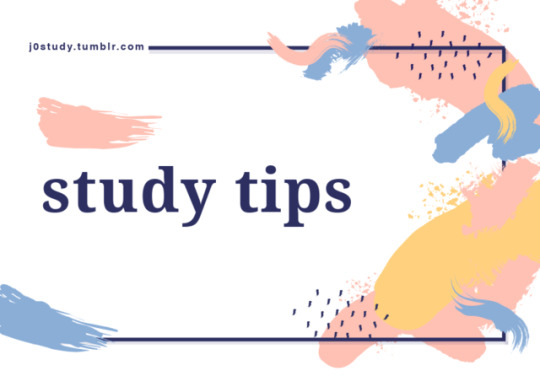


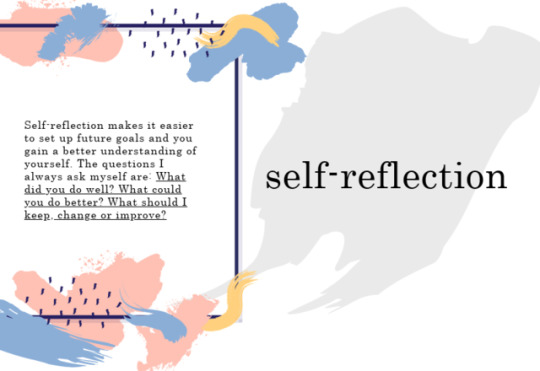
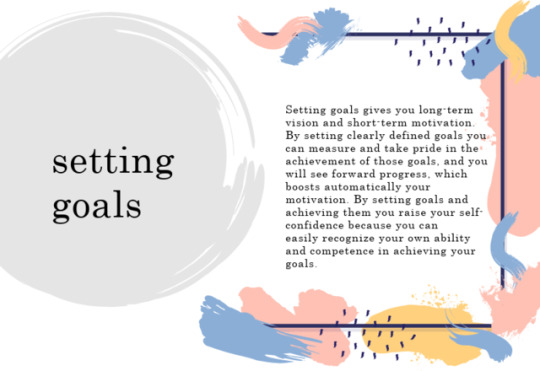

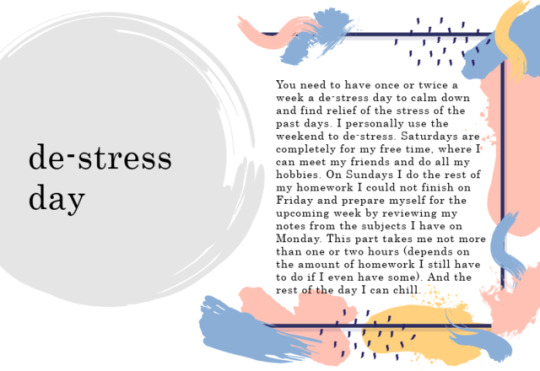
Some study-related and general life tips Study break ideas My Study Playlist
2K notes
·
View notes
Text

Christine almost frowned, noticing the other girl’s hesitation. What was the holdup? She was relatively certain she’d made a good impression so far, she’d been complimentary without going so far that she’d seem flattering, she’d given Sunny her full attention and that of quite a few others, she knew for a fact that she didn’t have anything on her face or in her teeth, and she’d taken two breath mints before she’d entered, and not had a thing to eat since. It was a bit frustrating that the other girl still had any reservations about her.
Did she know the truth?
However, after a tense moment, Christine got her phone back, and flashed a smile, sending Sunny a text quickly.
Hi, it’s Christine <3
She looked up, smiling coolly. “There we go, now you’ve got my information too. I’m thinking we should get two rom-coms and a horror, that’s what I’ve always done. Maybe we can cook something, too. I know a pretty easy recipe for raspberry thumbprints, and those are always fun. The house is pretty small, just a little four-bedroom cottage, but it’s got a nice back deck and a beautiful view.”
christine
-

It was nice to talk to someone, she had to admit. Sunny was just so cheerful, and it was contagious. It was going to be nice, spending time with her. For now, though, the song was ending, and with it their waltz. “I’m going to make sure it’s the perfect weekend. Drinks, dancing, movies, the works. I promise, you’re going to have the best time you’ve ever imagined, okay?” She stepped back, curtsying as the last strains of melody faded.
She pulled out her cell phone, passing it over to Sunny, unlocking it and pulling up her contacts. “You just put yourself in there, and I’ll take care of everything. I’m good at planning this kind of thing, you’re in the best hands you could be.” It wasn’t even a lie. She was going to pull out all the stops for this girl, she decided. She wasn’t sure what it was, but she was set on having her for her friend and confidante. Maybe it was her innocence. Maybe it was just that she would be a very nice looking right hand, and Christine knew aesthetics almost as well as she knew performance. Whatever it was, though, she never gave up on a goal once it had been set.

It wouldn’t be a lie if she said that she was relieved their little waltz had come to an end. Sparkling company as Christine is, Sunny still had a difficult time keeping up with such a skilled dancer, especially in a dress that’s quite tight. When they finished, she offered the other woman a warm smile, happy for the experience nonetheless. Not to mention her offer of a girls’ weekend excited Sunny who was always eager to make a new friend. “That sounds amazing, I can’t wait.”
She was almost ready to type her number in Christine’s phone when she hesitated. She of all people should know the danger in trusting too easily. A terrible thought crossed through her mind–was there an ulterior motive for this? Instantly, she felt guilty and pushed the thought aside. Shouldn’t she know better? Hasn’t she always prided herself for always reserving judgments? But look where that has that gotten her. Experience and philosophy always clashed in her mind. In these minute arguments, philosophy always won. In an act of repentance, she typed in her number almost too eagerly and offered Christine a bright smile.
“I’m so excited! We should plan what movies we should watch and ooh, what’s your rest house like? I’m so excited to explore it.”
28 notes
·
View notes
Text

Christine laughed, considering the question for less than three seconds before she answered. “Of course it counts, there’s a lot of things that happen spur of the moment. If you see someone about to be hit by a bus, pushing them out of the way isn’t hard work exactly, but you still very much did save a life- or at minimum, saved them quite a few hospital bills.”
She wouldn’t actually know anything about saving lives, of course, though. It wasn’t like that was on her resume. She was more the type to watch it happen, scream in horror, and faint, and she could admit that to herself, even if she’d never admit it to anyone else.
“I think that an active body needs an active mind as well. That’s why I went into psychology.”
christinerosalindglass:
Christine could have laughed at the blatant envy in Eloisa’s eyes, but she figured it was in everyone’s best interest not to. She loved seeing it though. It was nice to know that, despite everything, she could still be envied, and the fact that it was her roommate who was going to be doing the coveting made it just that much better. She’d get to taste that bit all semester.
“I’ve never really cared for IQ tests,” she said casually. “I’d say that whatever you do comes from your own work, not some innate ability. The people here are those who put in the time and effort to be the best, not those who are naturally gifted. I mean, do you think this,” she asked, leaning forward and extending her leg directly into the air, “comes without years of work? I highly doubt that your academics just appeared in your head either.”
She frowned at the final question. “I left Paris because it felt silly to stay uneducated. Classless. I felt that regardless of skill, it’s important to pursue higher learning.”

Eloisa did have to agree, although school wasn’t nearly as difficult as it was to some, they still had to work for their perfect grades.
“If you didn’t have to work for it, does it even count as an achievement?” Eloisa muses our loud. They want to mention that IQ actually isn’t an inate ability, and can be increased with work, but the don’t get the chance as Christine answers their question.
They frown softly. Of course Elosia thinks education is the most important thing, and many times in their childhood their parents made them give up a hobby they enjoyed to focus on school, but it seems like a shame anyways. Christine was really really good.
“Well I can’t disagree, education is very important.”

28 notes
·
View notes
Photo

VISIT –> www.all-about-psychology.com/biological-psychology.html for quality biological psychology information and resources.
14 notes
·
View notes
Text
Biological Bases of Behaviour
Neuroanatomy
Neuroanatomy is the study of the parts and functions of neurons. Neurons are individual nerve cells. Each neuron is made of distinct parts.
Dendrites - Rootlike parts of the cell that stretch out from the cell body. Dendrites grow to make synaptic connections with other neurons. This is where a signal from another neuron is received.
Soma- The cell body, contains the nucleus and the cell’s organelles
Myelin Sheath- A fatty covering of the axon that allows neural impulses to speed up
Terminal Buttons- The branched end of the axon that contains neurotransmitters
Neurotransmitters- Chemicals contained in terminal buttons that enable neurons to communicate.
Synapse- The space between the terminal button of one neuron and the dendrites of another.

How a Neuron Fires
A resting neuron is slightly negative because mostly negative ions are within the cell and mostly positive ions are on the outside of it. The cell membrane is selectively permeable. When the terminal buttons are stimulated, neurotransmitters are released into the synapse. They fit into receptor sites on the dendrites of the other neuron. Once the threshold is reached (enough neurotransmitters are received) the cell membrane of the other neuron becomes permeable, and positive ions flood the cell, making the overall charge of the cell positive. This change in charge travels down the neuron- this is an action potential. Once the action potential reaches the button, neurotransmitters in the neuron are released into the synapse. The process then may begin again in another neuron. Either a neuron fires completely or doesn’t fire at all- this is the all-or-none principle. A neuron cannot fire a little or a lot. It’s the same every time.
Neurotransmitters
Some neurotransmitters are excitatory, meaning that they excite the next cell into firing. Others are inhibitory meaning that they inhibit the next cell from firing.

Afferent Neurons- Take information from the senses to the brain
Interneurons- Take messages from afferent neurons and send them elsewhere in the brain or on to efferent neurons
Efferent Neurons- Take information from the brain to the rest of the body
The Organisation of the Nervous System
The Central Nervous System- The brain and the spinal cord
The Peripheral Nervous System- The other nerves in the body- it’s divided into two categories, the somatic nervous system (voluntary muscle movements) and the autonomic nervous system, which itself is broken up into two parts:
Sympathetic Nervous System- Mobilises the body in response to stress (fight or flight)
Parasympathetic Nervous System- Slows the body down in after a stress response (rest and digest)

Normal Peripheral Signal Transmission:
Sensory neurons are activated, transmitting a message up a neuron to the spine (afferent nerves) the message moves up through your spinal cord until it enters the brain through the brain stem to the sensory cortex. In response, the motor cortex sends impulses down the spinal cord to the muscles where the sensory neurons were activated, allowing a response to take place.
Reflexes:
Reflexes are responses that take place outside of conscious control. Sensory information is taken to the spinal cord, and processed by the spinal cord, returning to the motor neurons.
How We Study the Brain
Accidents: Accidents which damage the brain can serve to show what the damaged part of the brain does, as that section of the brain will no longer function properly. Phineas Gage’s famous railroad accident caused him to act without inhibition, showing the frontal lobe played a part in enforcing social norms. He was also highly emotional.
Lesions: The removal or destruction of part of the brain. Nowadays, this is never done purely for experiments. It’s often done to remedy certain illnesses. Back in the day, mental illness was often remedied by frontal lobotomies, as it would cause the patient to calm.
Electroencephalogram (EEG): Detects brain waves- allows scientists to study how active the brain is, especially in sleep research.
Computerised Axial Tomography (CAT) Scan: A sophisticated X-ray- cameras rotate the brain and combine the images into pictures which show a detailed 3D image of the brain’s structure.
Magnetic Resonance Imaging (MRI): Similar to a CAT scan, however, uses magnetic fields to determine the density and location of brain material to create a more detailed image of the brain.
Positron Emission Tomography (PET) Scan: Measures how much of a specific chemical (often glucose) the brain is using, showing which part of the brain is most active during certain tasks.
Functional MRI (fMRI): Combines the elements of an MRI scan and a PET scan. Shows the details of brain structure and information about blood flow in the brain.
How We Classify The Brain
There are 3 major sections of the brain; the hindbrain, the midbrain, and the forebrain.
Hindbrain: The life support system of the brain
The Medulla Oblongata: Involved in the control of blood pressure, heart rate, and breathing. Located above the spinal cord
The Pons: Above the medulla, connects the hindbrain with the mid and forebrain. Also involved in controlling facial muscles.
The Cerebellum: Located on the bottom rear of the brain, responsible for coordinating some habitual muscle movements
Midbrain: Just above the spinal cord. Very small in humans, but responsible for coordinating simple movement with sensory information. It integrates some types of sensory information and muscle movement. One important structure is the reticular formation which is a netlike collection of cells throughout the midbrain that controls general body arousal and focus. Without it, we would be in a coma.
Forebrain: The forebrain helps control what we consider consciousness. It is very large in humans, and what makes us, us.
Thalamus: Located on top of the brain stem. It receives sensory signals and relays them to the appropriate part of the brain.
Hypothalamus: Controls several metabolic functions such as body temperature, sexual arousal, hunger, thirst, and the endocrine system.
Amygdala and Hippocampus: The arms surrounding the thalamus. The amygdala is vital to experiencing emotion, and the hippocampus is vital to the memory system. Memories are processed through this area and sent to other parts of the cerebral cortex for permanent storage
Cerebral Cortex
The grey wrinkled surface of the brain, densely packed with neurons. When we are born, the cerebral cortex is full of disconnected neurons. As we grow and learn, dendrites grow and connect with each other, forming a complex neural web. The surface of the cerebral cortex is wrinkled. Those wrinkles are called fissures and they increase the available surface area of the brain. The Cerebral Cortex is made of 8 different lobes- four on each hemisphere. Any part of the Cerebral Cortex not associated with receiving sensory information or dealing with motor function is called an association area
FRONTAL LOBES: Large areas of the cerebral cortex at the front of the brain behind the eyes. The anterior part of the frontal lobe is called the prefrontal cortex and is responsible for directing thought processes. It is the brains central executive and is essential for predicting consequences, pursuing goals, controlling emotions, and abstract thought. Most people’s left hemisphere frontal lobe contains one of the 2 language processing areas- Broca’s area (responsible for the muscles necessary for speech production)- some left-handed patients have it in the right hemisphere. There is a thin strip at the back of the frontal lobe called the motor cortex which sends signals to the muscles, controlling voluntary movement
PARIETAL LOBES: Behind the frontal lobe on top of the brain. Contains the Sensory/Somatosensory Cortex right behind the motor cortex. It receives oncoming sensations from the rest of the body. Like the motor cortex, the top of the sensory cortex receives signals from the bottom of the body, and so on.
OCCIPITAL LOBES: Located at the very back of the brain, farthest away from the eyes- and yet it interprets messages from the eyes in our visual cortex Impulses from the right half of each retina is sent to the right occipital lobe, and impulses from the left half of each retina is sent to the left occipital lobe
TEMPORAL LOBES: Process sounds sensed by our ears. Sound waves are processed by the ears, become neural impulses and are interpreted in the auditory cortices. The auditory cortex is not lateralised like the visual cortex. Sound received from the left ear is processed in the auditory cortices in both hemispheres. Wernicke’s Area, the second language area is also located here. It’s responsible for comprehending language.
Hemispheres
The cerebral cortex is divided into two hemispheres, connected by a nerve bundle known as the corpus callosum. The hemispheres are like mirror images of each other, however, are slightly different. The left hemisphere receives sensory information and controls the motor function of the right half of the body. The right hemisphere receives sensory messages and controls the motor function of the left half of the body. This is a concept known as contralateral control. The left hemisphere may be active during the logic and sequential tasks and the right during spatial and creative tasks, but not enough information is known to fully make that conclusion. The specialisation of function in each hemisphere is known as Brain Lateralisation/Hemispheric Specialisation. A lot of research into this comes from split-brain patients, whose corpus callosum has been severed. This is a treatment used to deal with severe epilepsy and was pioneered by Roger Sperry and Michael Gazzaniga.
Brain Plasticity
The brain is somewhat flexible. If necessary, other parts of the brain can adapt to perform other functions- dendrites can grow to replace damaged sections of the brain, especially in younger children whose dendrites are growing at their fastest.
Endocrine System
The nervous system sends rapid signals that go away quickly. The endocrine system sends hormonal signals which travel throughout the body and last for a long time. The hypothalamus controls this system.
Adrenal Glands: Produce adrenaline, signals the rest of the body to prepare for fight or flight
Ovaries and Testes: Produce sex hormones (estrogen, progesterone, and testosterone) which allow for sexual development.
Genetics
Genetics is another important part of psychological research that is just now becoming realised. Most human traits like body shape, introversion or extroversion are the results of nature (genetics) and nurture (environment). Part of psychology is attempting to understand how much each of these concepts contributes to the development of traits.
Twins
Twins are an essential part of nature vs nurture experiments, as monozygotic twins (identical twins) contain the exact same DNA, studying them in separate environments can reveal the connection between nature and nurture. Studies like these have found that IQ is strongly connected to nature, however, there are biases in these studies. Since the twins share physical similarities, others may treat them in similar ways, creating the same effective psychological environment.
Chromosomal Abnormalities
Sometimes, errors occur during cell development, or as a fetus develops. There is more information on this in my post on molecular genetics. Here are some examples of disorders that occur as a result.
Turner’s Syndrome: Babies born with only one X chromosome, causing shortness, webbed necks, and differences in physical development.
Klinefelter’s Syndrome: Babies born with two X chromosomes and a Y chromosome, causing minimal sexual development and extremely introverted traits.
Down’s Syndrome: One of many disorders which inhibit mental development. It’s caused by an extra 21st chromosome and can cause a rounded face, shorter fingers and toes, slanted far set eyes, and poor mental development.
618 notes
·
View notes
Photo
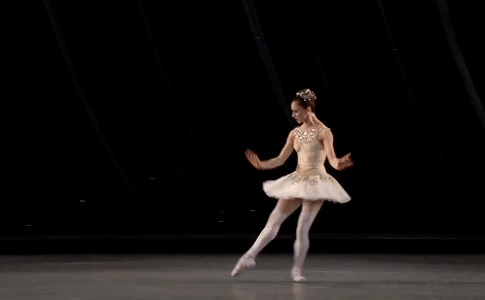
Marianela Nunez in Jewels (Royal Ballet)
198 notes
·
View notes
Photo

Olesya Novikova in Papillion
1K notes
·
View notes
Photo


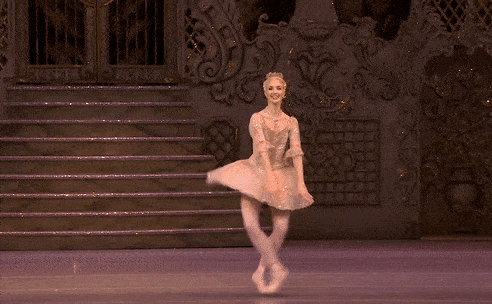


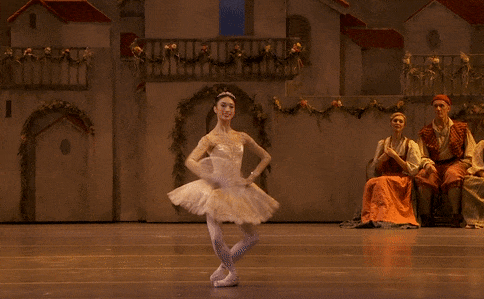
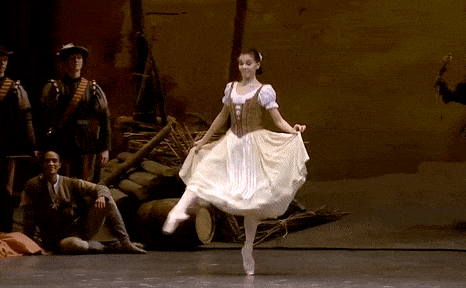

The Principal Ladies of the Royal Ballet
Francesca Hayward, Laura Morera, Lauren Cuthbertson, Marianela Nunez, Yasmine Naghdi, Akane Takada, Natalia Osipova, Sarah Lamb
788 notes
·
View notes
Photo
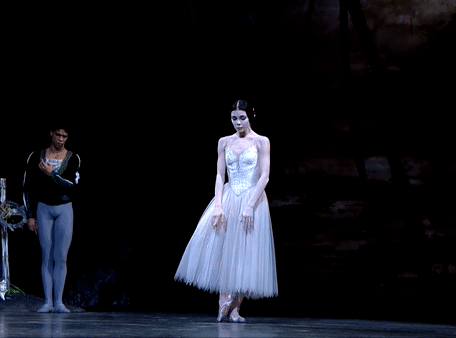
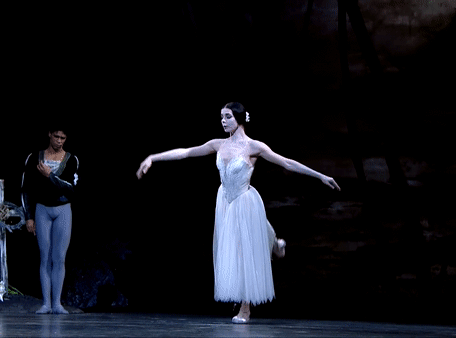
Natalia Osipova in Giselle (Royal Ballet)
3K notes
·
View notes